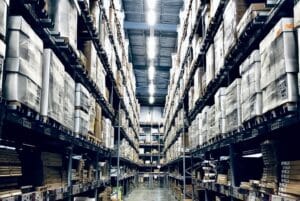Feedback: a strategic asset to master
WMS software
Logistics
Supply Chain
July 25, 2025

Product returns, an underestimated logistical issue
What if the real performance test of a supply chain was not played on the expedition, but on the return?
The logistics of returns, also called logistics backhand, is often considered a burden by companies. However, today it is much more than a simple constraint: it is a strategic issue and a real lever for competitiveness.
Did you know that, according to certain estimates, the cost of returning logistics could represent up to 4.5% of the total turnover of a company? A figure that gives to think, isn't it? With increasingly demanding consumers and the boom in e-commerce, companies must rethink their approach to logistics reverse to transform this complexity into competitive advantage.
How, then, transform what seems to be a burden into an optimization and customer satisfaction lever? This article will immerse you at the heart of challenges and solutions for effective feedback management, by exploring how WMS (Warehouse Management System) software can become your best ally. Discover the best practices to reduce the impact of feedback on your logistics costs and make reverse logistics a pillar of your success.
The issues of returns in warehouse management
A reality with multiple impacts
Each year, millions of products are the opposite path, from customers to warehouses. The phenomenon has notably amplified by the growth of e-commerce : the return rate can reach 20 % in fashion for example, and up to 40 % in certain segments.
This volume generates:
- Additional transport and treatment costs
- Complex management of stocks and inventories
- A potential loss of market value
- Extended deadlines for sale
- Customer dissatisfaction in the event of blur or slow processes
The main logistics challenges
The logistics of feedback requires a specific organization:
- Quickly identify the returned product (with lot number, article code, return voucher)
- Check your condition (new, damaged, non -compliant)
- Decide its future: backtrack, repair, recycling, destruction
- Process refund or exchange
- Update logistics traceability data
An ineffective approach can therefore lead to significant repercussions on the profitability, even the reputation of your business, and cause some difficulties.
Hidden costs and limited visibility
The returns generate a multitude of costs: transport, labor for sorting and reintegration, depreciation of products, even destruction. Also, without real -time traceability and clear processes, it is difficult to identify precisely where the ineffectures are. Have you ever felt like a blind man in the face of an influx of returns? This is a sign of a lack of visibility.
Impact on customer satisfaction and brand image
A slow or complicated return process can very quickly frustrate a customer, even if the initial purchase went well. Indeed, a bad return experience can lastingly tarnish the brand image and, ultimately, lead to a loss of loyalty.
Think about it : is a fluid and hooked customer experience a luxury or a necessity in the digital age? Clearly, a necessity!
Operational complexity and inventory management
The logistics of feedback is more complex than traditional logistics. Returned products can be damaged, incomplete, or require specific quality control before being put back in stock or reconditioned. This variability makes storage management and management of inventories particularly delicate, potentially creating bottlenecks in the warehouse.
Returns: managing a full -fledged flow
The frequent error is to treat returns as "annexed" flows. On the contrary, they must be thought of as a full -fledged and independent logistics chain : logistics reverse. It presupposes planning procedures, well -defined roles and above all high -performance steering tools.
Activable checklist: assess and improve your current return process
- Identify the main reasons for feedback (damaged product, bad size, change of opinion, etc.)
- Visualize each step, as long as the customer initiates the return to reinstatement or rebuilding the product
- Estimate the direct and indirect costs of your feedback (transport, workforce, loss of value)
- Collect your customers' experience feedback regarding the return process
- Measure the average time to treat a return
How does WMS software optimize product feedback?
A Warehouse Management System (or warehouse management software) is designed to orchestrate all the activities of a warehouse, including returns. Thus, its integration transforms the logistics of returns from a cost center into an operational advantage . A WMS is not content to manage storage; It is a central pillar for warehouse automation , including for logistics reverse.
Real -time traceability
WMS software allows you to trace each item returned upon receipt. Each step is then recorded, from unloading to quality inspection, including reconditioning. At any time, you know where a specific article is. This increased visibility reduces errors, accelerates the treatment time for returns and improves customer satisfaction.
Intelligent inventory management
A WMS solution allows precise inventory management of returned products. The articles can be classified according to their state defined upstream (new, reconditioned, defective), which facilitates decisions concerning their future destination. By having an overview of the available stock, including feedback, companies can optimize their stock levels and reduce losses.
Rationalization of processes with the Poka-Yoke approach
The concept of Poka-Yoke, which aims to prevent human errors, can be integrated into the return processes via WMS. For example, the system may require the verification of certain criteria before accepting a product in stock, such as the correspondence between the serial number and the original command. The processing errors are thus reduced, ensuring the quality of the products put in circulation.
Activable checklist: Maximize feedback with a WMS
- Evaluate your needs to define the essential features of the WMS solution for your logistics reverse
- Compare the different WMS solutions available on the market
- Collaborate with your WMS publisher for fluid integration with your existing systems (ERP, e-commerce)
- Integrate the employees concerned from the start by the implementation of WMS. Make sure that the staff is perfectly trained (link) to the use of the new system for feedback in particular
- Put in place performance indicators (KPI) in order to follow the speed of feedback from returns, the rate of products delivered on sale, and the associated costs
Best practices to reduce the impact of feedback on your logistics costs
Beyond the implementation of WMS software, many strategies can be implemented to minimize returns and their associated costs. The key lies in a proactive approach and a constant data analysis.
1. Anticipate the feedback upstream
The best feedback starts before purchasing. This goes through:
- Clear product sheets: high quality photos, detailed specifications, specified sizes…. Did you know that many returns are due to inadequate product descriptions?
- Rigorous quality control: make sure that the products leaving the warehouse are in perfect condition.
- Robust packaging: Protect the products during transport to avoid damage.
2. Optimize return policies
A well -informed customer is more forgiving in the face of a concern. The return policy must be clear and just.
- Reasonable deadlines: Offer sufficient time for customers to be able to return the items.
- Explicit return conditions: specify the state in which the product must be returned to be eligible for a refund or an exchange.
- Ease of the process: Offer simple options to initiate a return, such as an online portal or prepaid return labels.
3. Set up a return prevention strategy
Prevention is the best cures!
- Customer feedback collection: Analyze the reasons for returns to identify recurring problems (size, quality, etc.) and remedy it upstream.
- Precise sizes guides: for ready-to-wear, detailed sizes guides and recommendation tools can considerably reduce returns related to sizes.
- Product videos: Allow customers to better view products before purchase.
4. Effectively manage returned products
Not all returned products are intended for destruction. Many items can be put up for sale after light reconditioning.
- Dedicated reconditioning zones: Create specific spaces in your warehouse for quality control and reconditioning.
- Partnerships with reconditioners: if the volume is significant, plan to work with specialized companies.
- Alternative sales channels: Sell the products reconditioned via dedicated platforms, private sales, or factory stores.
Activable checklist: strategies to minimize feedback costs
- Do not just treat returns, understand why they occur by analyzing them
- Form your customer service teams because they are the first to interact with dissatisfied customers; their ability to solve problems can prevent a return
- Negotiate with carriers to obtain advantageous prices for returns
- Consider refurbishment, especially for electronic or high value products. It is an economical and ecological option
Make logistics a growth lever
Too often overlooked, feedback is actually a formidable value creation lever. It directly impacts profitability, customer satisfaction as well as brand image.
By adopting a proactive approach, based on the right tools and structuring its organization around logistics reverse, you can not only reduce costs, but also create a fluid and responsible customer experience.
Remember that each return is an opportunity to improve customer satisfaction and strengthen your brand image.
So, are you ready to rethink the management of your feedback to transform it into a logistics asset? Explore the solutions available to you thanks to our Ego WMS .
Contact us to tell us about your needs. After a first exchange, we will come back to you with a demo of our WMS adapted to your environment and your context.
FAQ: Everything you need to know about the logistics of returns
What is the difference between logistics and traditional logistics donation?
Traditional logistics manages product flows to the customer. The logistics, or logistics of returns, takes care of the flows in return: defective, non -compliant, recyclable or end of life products. It thus includes all the processes that manage the flow of products from their consumption point towards the point of origin.
Why is the management of feedback so important?
Returning management directly impacts customer satisfaction, the reputation of the brand, and the profitability of the company. Well -managed feedback makes it possible to minimize costs, recover the value of products, and strengthen customer loyalty.
What are the benefits of WMS software in feedback?
WMS (Warehouse Management System) software improves returns management via:
- Real -time traceability of returned products,
- Optimization of reception and sorting processes,
- Storage management and inventory management,
- Prevention of errors with the Poka-Yoke principle.
How to reduce costs linked to feedback?
- Improve the quality of products and information (precise descriptions, quality control),
- Optimize return policies so that they are clear and just,
- Set up feedback strategies (customer feedback, sizes for example),
- Effectively manage the reconditioning and resale of products,
- Use tools such as WMS software for warehouse automation and better stock management.
Most read articles
WMS software
Logistics
Supply Chain
November 7, 2025
Go beyond the ABC method: How a WMS refines your inventory management strategy?
In logistics, the ABC method is a classic. But here's the hard truth: in the age of e-commerce, relying solely on a static ABC analysis is like trying to win a Formula 1 race without the right car. The problem isn't the method itself, but treating it as an immutable truth set in stone once a year.
WMS software
Logistics
Supply Chain
October 31, 2025
Packaging optimization: How does your WMS save you money on transported "empty space"?
Empty space represents, on average, 57% of the volume of packages shipped in e-commerce. It's not just wasted space; it's money gone up in smoke. In this article, we'll analyze how a WMS platform can become the ultimate weapon against empty space.
WMS software
Logistics
Supply Chain
July 3, 2024
Inventory management using WMS software
To master your inventory management, it is imperative to use suitable and efficient inventory management software. With this automation, you can monitor the status of your inventory in real time, allowing you to make informed and rapid decisions to avoid stock-outs or overstocks.

















